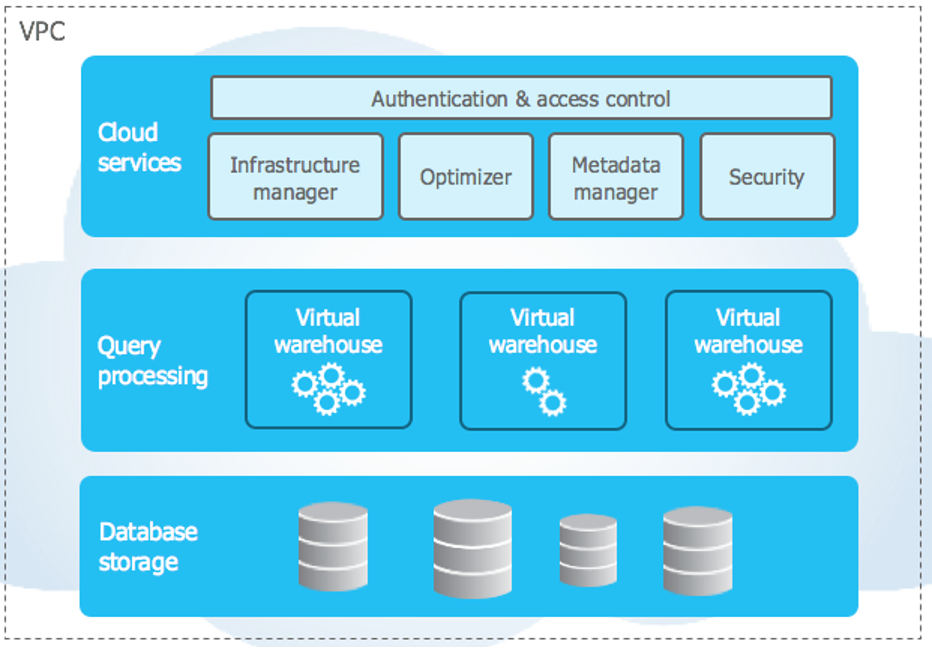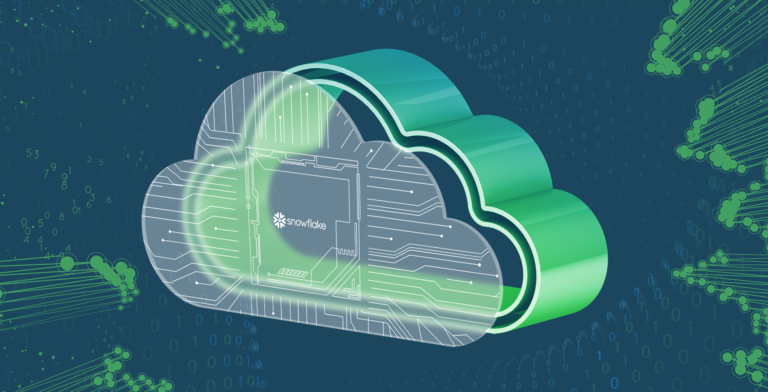Data is the new oil that turns the wheels of the digital economy. But just like raw oil, data is only valuable when it is accurately gathered, organized, and analyzed in order to gain real-time insights and support informed decision-making.
Today, the amount of data is growing at an unprecedented rate — we are now talking about zettabytes of data. The complexity of big data is growing too as more disparate data sources appear and new use cases continue to evolve. Built decades ago, legacy data storages come underprepared for modern enterprise demands and data-intensive workloads.
To support real-time analytics needs, organizations need to rethink their approach to data warehousing. Cloud-native and highly performant, contemporary data storage solutions are designed to match the scalability and business agility requirements of businesses. One of such solutions is Snowflake. Launched in 2014, Snowflake has quickly rocketed into prominence as a cloud data platform that underpins modern architectures and ensures scalable computing power across a range of areas.
What is Snowflake?
Snowflake is the first data warehouse built specifically for the cloud. What makes Snowflake so special is its architecture that takes the best of traditional shared-disk and modern shared-nothing approaches to ensure high availability and simple data management while driving reliable performance and superior scalability capabilities.
Snowflake’s unique architecture consists of three layers — database storage, query processing, and cloud services. Though physically separated, these layers are logically integrated and can be dynamically brought together with the right balance of resources for each workload.

Source: Snowflake
Furthermore, Snowflake is available on all major cloud platforms — AWS, Azure, and GCP — enabling businesses to embrace the multi-cloud strategy.
Now that you know the core principles behind Snowflake, let’s see why forward-thinking companies are looking for an experienced
Snowflake services partner to set up a state-of-the-art data warehouse tailored to their unique business needs.
Benefits of Migrating to Snowflake
1. Near Zero Management
Since Snowflake is offered as Software-as-a-Service (SaaS), there is no hardware or software to be installed, configured, or managed. Organizations can set up data warehouse solutions with the minimum involvement of database administrators (DBA) or IT departments.
With dynamic auto-scaling capabilities, there is no need for upfront estimation of computing power and memory requirements as these parameters can be easily adjusted on-the-fly. Also, Snowflake does not use indexes, instead, it slices data into micro-partitions — automatically, with no maintenance needed.
2. Exceptional Speed and Performance
Conventional data storage solutions could have information tied up in processing for hours or even days. But in a world where time to value is a competitive advantage, companies are not willing to wait that long for business-critical insights.
With Snowflake, performance is built into its DNA. By leveraging massively parallel processing (MPP), Snowflake enables enterprises to run concurrent workloads (e.g. BI queries, data ingestion), which significantly accelerates performance. Snowflake’s multi-cluster architecture makes it possible to allocate and scale up and down individual compute engines, or virtual warehouses, without affecting other workloads.
3. Support for Semi-structured and Unstructured Data
From neatly organized Excel sheets to social media posts, data comes in varied formats. Amid this variety, structured data, although easy to search and analyze, represents just a small portion, while unstructured data accounts for up to 80% of global data.
Snowflake provides native support for semi-structured data formats including JSON, Avro, ORC, Parquet, and XML. It means that you can load semi-structured data directly into the warehouse without any prior transformation or conversion needed. To help companies run queries against even broader datasets and derive richer insights, last year Snowflake launched support for unstructured data, including video, audio, images, and PDFs.
4. Comprehensive Data Sharing Features
When it comes to data sharing capabilities, Snowflake is also ahead of the curve. Its Secure Data Sharing feature empowers teams to easily access and share live data across the organization or with external providers.
Unlike traditional data sharing services where a copy of data is shared, Snowflake provides access to underlying database objects that are read-only, meaning that they cannot be modified or deleted. This approach gives you granular control over the use of your enterprise data, allowing you to revoke access if needed.
5. Enhanced security
One of the top concerns associated with cloud data migration is security. From insecure APIs to misconfiguration-related breaches, Chief Information Security Officers (CISO) have to cope with the challenges of the expanding attack surface and complex cloud environments.
Snowflake is committed to ensuring industry-grade protection of enterprise data and sensitive customer information. In addition to strong 256-bit AES encryption of data in transit and at rest, Snowflake leverages multi-factor authentication, single sign-on, and role-based user management. Also, support for HIPAA, SOC 2 Type 2, and PCI DSS compliance makes Snowflake a go-to solution even for highly regulated industries like healthcare and government.
6. Pay-Per-Consumption Pricing Model
The benefits of data migration to the cloud are numerous, and cost savings is one of them. But when departments start spinning up virtual environments for their needs, companies are often caught off guard with hefty cloud bills.
To bring transparency into
cloud cost management and avoid budget overruns, Snowflake offers a consumption-based pricing model, i.e. users pay only for what they actually use with per-second granularity. In addition, Snowflakes separately bills for computing resources and storage, enabling even greater flexibility and cost control for companies.
The Bottom Line
Already valued at $7.06 bln, the global data warehousing market continues to grow at a CAGR of 11.17% and is expected to amass $13.32 bln by 2026. And while there is no shortage of data warehousing solutions, Snowflake beats the competition as the first data platform specifically built for the cloud. From superior scalability and elasticity to robust performance and top-notch security, Snowflake offers sustainable competitive advantage to enterprises of all stripes.
Cloud migration is no easy endeavor unless you partner with a seasoned
cloud engineering services provider. At KandaSoft, we help enterprises with all Snowflake migration needs — from consulting on the optimal data strategy to building a custom Snowflake data warehouse.





